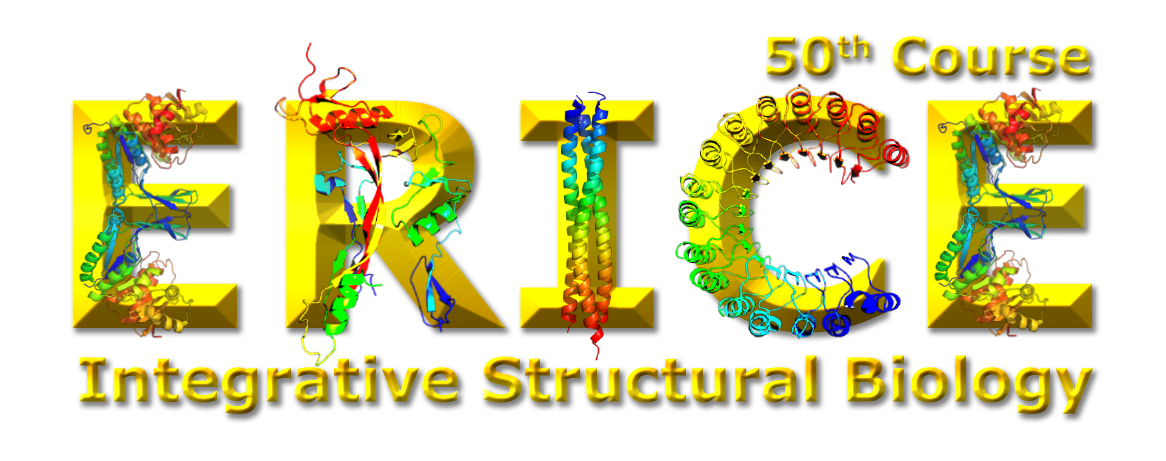
Ettore Majorana Foundation and Centre for Scientific Culture
President: Professor Antonino Zichichi
INTERNATIONAL SCHOOL of CRYSTALLOGRAPHY
Director: Sir Tom Blundell, FRS FMedSci


Cookies help us deliver our Services. By using our Services or clicking I agree, you agree to our use of cookies.
I agree cookie policy
Ettore Majorana Foundation and Centre for Scientific Culture
President: Professor Antonino Zichichi
Director: Sir Tom Blundell, FRS FMedSci




Group Photo
The International School of Crystallography is based in Erice in Sicily at the Ettore Majorana Foundation and Centre for Scientific Culture. The event was advertised by mailing out 7000 announcements worldwide about one year ahead of the course. More than 200 applications were received – a huge oversubscription given that the number of participants was limited to 120. In addition to participants, we had 30 lecturers, workshop presenters and the organisers of the conference. The participants included 83 men and 67 women, from 28 countries. Participants were largely from university (PhD students, postdoctoral and young researchers), with some industry participants.
The aim of the organisers was to:
As organisers, our priorities were that the school would be:
The lectures were organized by biological theme (cellular communications, cellular complexity, cellular defense, membranes and channels, and DNA and RNA repair) rather than by methodology, and provided the speakers with a chance to describe the integrative use of different techniques for solving problems.
Several speakers provided examples of how the use of high resolution X-ray structures of individual components, combined with the lower resolution envelope calculated with Cryo electron microscopy (cryoEM) can provide atomic-level detail for for large protein assemblies that were considered beyond reach just a few years ago. Examples included: the anaphase promoting complex (D. Barford), RNA Pol III (A. Vannini), mammalian mitochondrial ribosomes (N. Ban), the complement system (P. Gros). Structural knowledge of protein complexes can facilitate the understanding of biological mechanisms and support the discovery and design of new vaccines and drugs: examples included HIV spike trimer structure and interactions with antibody (P. Bjorkman), DNA double strand break repair mechanism (T. Blundell), targeting virulence to develop antibacterials (J. Martin). Correct assignment of the individual components can be achieved, or confirmed by the use of crosslinking techniques followed by mass spectrometry analysis (N. Ban, M. Rout). Some speakers discussed details of sample preparation (N. Mizuno, P. Nissen), structure quality evaluation (W. Chiu) and the use of computational methods for structure prediction (C. Sander). Two full morning sessions were dedicated to talks selected from the submitted abstracts: “Rising Stars” (current PhD students or post-docs within 2-years of PhD) and “Breaking News”.
Participants presented ~80 posters each in one of the two evening poster sessions. Particularly valuable for young researchers were the 2 minute "come see my poster" presentations immediately prior to each poster session. Several general events were organized during the day and in the evenings to further facilitate networking opportunities and scientific exchange among all participants.
A “Future Challenges” session was organized as an interactive session between the meeting organizers and the audience and clearly highlighted the intense interest in combining different structural techniques to tackle complex structural biological problems. Of the many new and/or established techniques discussed during the meeting (X-ray, cryoEM, NMR, biophysical methods, SAXS, microED, mass spec, molecular biology, in silico (virtual) screening, confocal light microscopy, XFEL) most participants were very interested in cryoEM (either as a technique they were already using (~80% of audience) or a technique they were planning to use soon (almost 100%). X-ray, Biophysical Methods, molecular biology were close seconds (~50%-90% of people were already using them and >80% planned to incorporate them in their research), while mass spec, SAXS, NMR, microED, VS, CLM, XFEL were of interest to ~30-50% of the audience. The major issue that came up (mostly focused around the use of cryoEM, but equally valid for NMR and SAXS), was the lack of appropriate and adequate training and the oversubscription and lack of access to facilities.
Several awards were provided for young researchers. The two poster sessions had 3 prizes each: first, second and third selected by international juries. The awards for the third places were assigned to Dominik Hrebik (Masaryk University, Czech Republic) and Karel Skubnik (Masaryk University, Czech Republic), the second prizes were awarded to Matti Pronker (Utrecht University, The Netherlands) and Valentina Loconte (University of Padua, Italy). Finally, the first prizes were awarded to Verity Jackson (University of Oxford, UK), and Almudena Ponce-Salvatierra (Max Plank Institute, Goettingen, Germany).
The Rising Stars lecturers were selected from abstracts and were awarded to: Cécile Exertier (University of Rome La Sapienza, Italy), Sofiya Fedosyuk (Medical University of Vienna, Austria), Herman Fung (University of York, UK), Guilherme H. Marchi Salvador (University Estadual Paulista, Brazil), Sarah Webb (Francis Crick Laboratory, London, UK) and Marcin Zienmiak (University of Warsaw, Poland).
A very significant prize is the Lodovico award, named after the founder of the School and recognizing the most active student inside and outside the lecture hall. This prize was awarded to Dimple Karia (University of Oxford, UK). Enclose a picture of the prize winners.
At the end of the Course, participants were asked to complete a survey to evaluate the course and provide comment on the quality of the program. Their responses indicated that a similar meeting should be held at least within 4 years and that the course had achieved most of its objectives (score 86/100).

Picture of the winners: from left to right:
Jennifer Martin, E. Yvonne Jones, Dominik Hrebik, Karel Skubnik, Matti Pronker, Valentina Loconte, Verity Jackson, Almudena Ponce-Salvatierra, Giovanna Scapin, Annalisa Guerri and Dimple Karia.